Red flags, wet weather, time limits, early chequered flags. Occasionally, Formula 1 races fail to reach full distance. Here’s a list of every Grand Prix in which not all of the laps have been completed, plus the reasons why racing was called off early.
1950 Indianapolis 500
The first round of the Drivers’ Championship which did not run to full distance was not a Grand Prix but the Indianapolis 500 in Formula 1’s inaugural year. The race was scheduled to run for 200 laps but was stopped after 138 laps due to rain.
1971 Canadian Grand Prix
It was not until 1971 that the first Grand Prix did not reach full distance. This was the first race in F1 history to be red-flagged. It was stopped after 64 of the 80 scheduled laps due to the weather conditions and was not restarted.
1974 Brazilian Grand Prix
Rain brought an early end to proceedings at Interlagos in 1974. The race was halted after 32 of the scheduled 40 laps, resulting in a home win for Emerson Fittipaldi.
1974 Spanish Grand Prix
This was the first Grand Prix to be stopped due to it reaching a two hour time limit. Niki Lauda won having completed 84 of the scheduled 90 laps.
1975 Spanish Grand Prix
One year later, the Spanish Grand Prix once again came to a premature end, but this time under tragic circumstances. The rear wing on Rolf Stommelen’s car broke, causing a crash with Carlos Pace. Four people were killed by Stommelen’s car. The race continued for four laps, but was halted on Lap 29. It was not restarted and – as 75% of the 75 lap race distance had not been completed – half points were awarded for the first time in F1 history.
1975 Monaco Grand Prix
The 1975 Monaco Grand Prix marked the first time that two consecutive F1 races failed to reach their scheduled distance. The race started in wet conditions, and only 75 of the scheduled 78 laps were completed before the two hour time limit was reached.
1975 British Grand Prix
The British weather is to blame for the premature end of the 1975 British Grand Prix. Held in mid-July, a hailstorm brought chaos to Silverstone and only six cars hadn’t crashed out when the race was ended on Lap 56 of the scheduled 67.
1975 Austrian Grand Prix
The 1975 Austrian Grand Prix was called off after only 29 of the scheduled 54 laps due to torrential rain. Vittorio Brambilla earned half points for the only win of his career, despite crashing into the barriers just after taking the flag. Some teams prepared for a restart but, as the chequered flag had been shown instead of the red flag, this was not possible.
1978 Argentine Grand Prix
The first race of the 1978 season ended one lap earlier than scheduled due to the chequered flag being erroneously shown at the end of Lap 52.
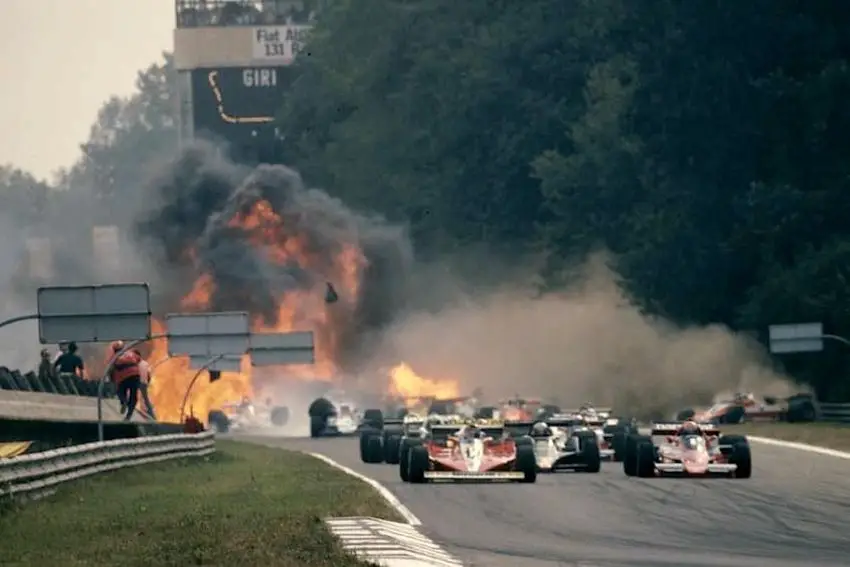
1978 Italian Grand Prix
The first start at the 1978 Italian Grand Prix resulted in a fatal accident for Ronnie Peterson. Almost three hours later, the race was restarted – but the distance was shortened from the scheduled 52 laps to 40.
1981 Brazilian Grand Prix
Held in wet conditions, the 1981 Brazilian Grand Prix reached the two hour time limit one lap before the scheduled 63 laps.
1981 Belgian Grand Prix
The 1981 Belgian Grand Prix was marred by two incidents – one fatal – involving mechanics. Neither of those incidents impacted on the length of the race though, which was stopped after 55 of the 75 scheduled laps due to rain.
1981 Canadian Grand Prix
Only 63 laps of the expected 70 were completed on a wet day in Montreal in 1981. The race reached the two hour time limit.
1982 Detroit Grand Prix
The first race in Detroit was not Formula 1’s finest hour, with the track not prepared correctly leading to a delayed start to on-track running. In the Grand Prix, the race was stopped after seven laps due to a crash. It was restarted over an hour later, but was destined to reach the two hour limit. Strangely, the chequered flag was shown one lap before the two hours were up. Of the scheduled 70 laps, only 62 were completed.
1984 Monaco Grand Prix
The Monaco Grand Prix came to a controversial early end in 1984 due to the weather conditions. Alain Prost was leading, but rising star Ayrton Senna had been challenging him for the lead just before the red flag was shown.
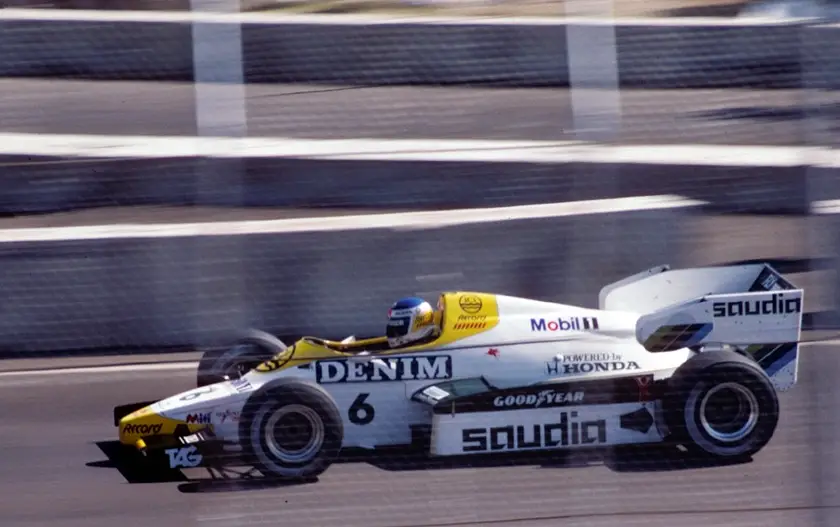
1984 Dallas Grand Prix
The only Formula 1 race in Dallas came to an end one lap earlier than scheduled as the two hour time limit was reached.
1984 British Grand Prix
The 1984 British Grand Prix was scheduled to run for 75 laps. A number of cars were eliminated on the first lap and the race was stopped on the eleventh lap following a crash for Jonathan Palmer. The race was restarted for 60 laps, giving an overall distance of 71 laps instead of the expected 75.
1985 Portuguese Grand Prix
Ayrton Senna took his first Grand Prix victory in wet conditions at the 1985 Portuguese Grand Prix, completing 67 of the 70 scheduled laps. The slower pace meant that the two hour time limit was reached three laps before the scheduled end of the race.
1985 British Grand Prix
Alain Prost lapped the entire field at Silverstone in 1985, and the chequered flag was erroneously shown one lap early. The race result was taken after 65 laps instead of the scheduled 66 laps.
1986 Hungarian Grand Prix
The very first Hungarian Grand Prix to be held as a round of the World Championship was scheduled to run for 77 laps, but the two hour time limit was reached and the race ran to 76 laps.
1987 Mexican Grand Prix
The 1987 Mexican Grand Prix was effectively split into two heats following a crash for Derek Warwick, which red-flagged the original race on Lap 30. The second race of 33 laps was taken from a standing start and aggregate times were used to determine the results. The race should have run to 68 laps.
1988 Brazilian Grand Prix
The first race of the 1988 season was one lap shorter than it should have been after Ayrton Senna had to complete the formation lap stuck in first gear. The start was aborted as a result, shortening the race distance by one lap, and Senna started from the pit lane.
1989 San Marino Grand Prix
Gerhard Berger suffered a fiery crash on Lap 4 of the 1989 San Marino Grand Prix, leading to a red flag. The race was scheduled to run for 61 laps, but the second race was reduced to 55 laps and the result was decided on the aggregate timings from the first three laps and the 55 lap second race.
1989 United States Grand Prix
The first race at the Phoenix track reached the two hour time limit after 75 of the scheduled 81 laps.
1989 Australian Grand Prix
The last race of the 1989 season ran to only 70 of the expected 81 laps as the two hour time limit was reached due to wet weather conditions.
1990 Portuguese Grand Prix
The 1990 Portuguese Grand Prix was stopped after 61 of its scheduled 71 laps, following a crash between Alex Caffi and Aguri Suzuki.
1991 United States Grand Prix
Formula 1’s final race at the Phoenix Street track was cut short by one lap as the two hour time limit was reached.
1991 Australian Grand Prix
For almost 30 years, the 1991 Australian Grand Prix held the record for being the shortest Formula 1 race. It was stopped after only sixteen laps due to torrential rain and was not restarted. Half points were awarded as a result.
1992 French Grand Prix
The 1992 French Grand Prix was decided on aggregate times, as it was red-flagged after eighteen laps due to rain. Originally scheduled to run for 72 laps, the result was decided by aggregate times from the first eighteen lap race and the second 51 lap race.
1994 San Marino Grand Prix
The 1994 San Marino Grand Prix was scheduled to run for 61 laps. The race was stopped as a result of Ayrton Senna’s fatal accident on Lap 6. It was restarted with the aggregate times from the first five laps and the second 53 lap race.
1994 Japanese Grand Prix
The 1994 Japanese Grand Prix is the last time that aggregate times were used to determine the result of a Formula 1 race. Due to rain and an incident involving a marshal, the original race was stopped on Lap 15. The race was later restarted for 37 laps. The result of the second race was combined with the result after the first 13 laps to give an overall result. The race therefore lasted 50 laps instead of the scheduled 53.
1995 Argentine Grand Prix
The 1995 Argentine Grand Prix ran to 72 laps instead of the scheduled 71. This was because the race was red-flagged following a first lap collision. The original start was voided and the race was re-started with the full 71 laps.
1995 Canadian Grand Prix
The 1995 Canadian Grand Prix was run over its intended 69 laps but the result was declared after 68 laps following an invasion of the track by fans celebrating Jean Alesi’s maiden victory.
1995 European Grand Prix
The original start of the 1995 European Grand Prix was aborted due to Max Papis stalling his Footwork. The start was then delayed by five minutes and the race was shortened from 68 laps to 67 laps.
1996 Monaco Grand Prix
Only three cars were still running at the end of the epic 1996 Monaco Grand Prix which, due to wet weather conditions ran to the two hour time limit. 75 of the scheduled 78 laps were completed before the chequered flag was shown.
1997 Monaco Grand Prix
For a second year in succession, the Monaco Grand Prix did not reach its full distance due to wet weather conditions. Only 62 of the scheduled 78 laps were completed before the two hour time limit was reached.
1997 Canadian Grand Prix
Following a crash for Olivier Panis – who broke both his legs – the 1997 Canadian Grand Prix was brought to an early end. The race ran for only 54 of the 69 scheduled laps.
2001 Belgian Grand Prix
Following a huge crash for Luciano Burti in the early stages, the 2001 Belgian Grand Prix was red-flagged. Under the regulations at the time, the first four laps were null and void and the race was restarted – but with only 36 laps, eight down on the original scheduled distance.
2003 Brazilian Grand Prix
Held in wet conditions, the 2003 Brazilian Grand Prix was stopped following crashes for Fernando Alonso and Mark Webber. Originally scheduled to run for 71 laps, it was red flagged after 54 laps and not restarted.
2003 Austrian Grand Prix
A faulty launch control on Cristiano da Matta’s Toyota meant that there were three formation laps at the A1-Ring in 2003. The race distance was shortened from 71 laps to 69 laps as a result.
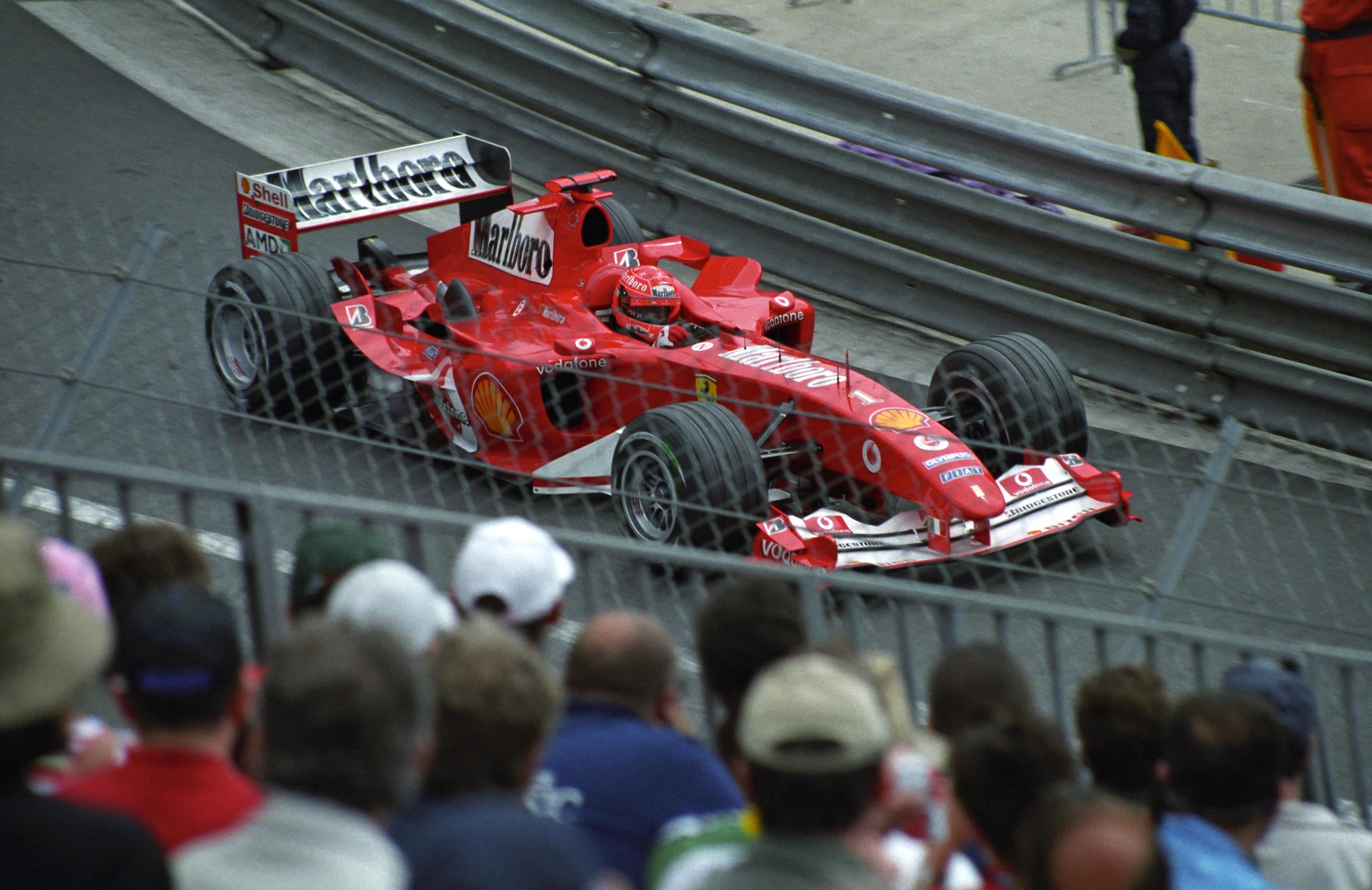
2004 Monaco Grand Prix
There were two aborted starts at the 2004 Monaco grand Prix due to Olivier Panis stalling in his Toyota and eventual race winner Jarno Trulli’s Renault leaking coolant. The race distance was shortened from 78 laps to 77 as a result.
2004 German Grand Prix
Olivier Panis stalled his Toyota on the grid, leading to an aborted start. As there was another formation lap, the race distance was shortened from 67 laps to 66.
2005 Australian Grand Prix
Kimi Raikkonen stalled his McLaren on the grid at the 2005 Australian Grand Prix, which meant the start was aborted. Another formation lap took place, shortening the race distance from 58 to 57 laps.
2005 European Grand Prix
Giancarlo Fisichella stalled his car on the grid leading to a second formation lap and the race distance being shortened from 60 laps to 59 laps.
2006 Australian Grand Prix
Formation lap drama caused the 2006 Australian Grand Prix to be shortened from 58 to 57 laps. Juan Pablo Montoya spun and lined up at the back of the grid as a result, then Giancarlo Fisichella stalled his engine on the grid, resulting in another formation lap. Montoya re-took his original starting place while Fisichella started from the pits.
2007 Spanish Grand Prix
Jarno Trulli stalled his Toyota on the grid at the end of the first formation lap. The start was aborted, another formation lap was carried out and the race distance was shortened from 66 laps to 65 laps.
2007 British Grand Prix
Felipe Massa stalled on the grid at Silverstone in 2007, meaning that a second formation lap was carried out. The race distance was shortened from 60 to 59 laps as a result.
2008 Monaco Grand Prix
Due to wet conditions, the first laps of the 2008 Monaco Grand Prix were taken at a slower pace than usual. This meant that the event ran to the two hour time limit and only 76 of the 78 laps were completed.
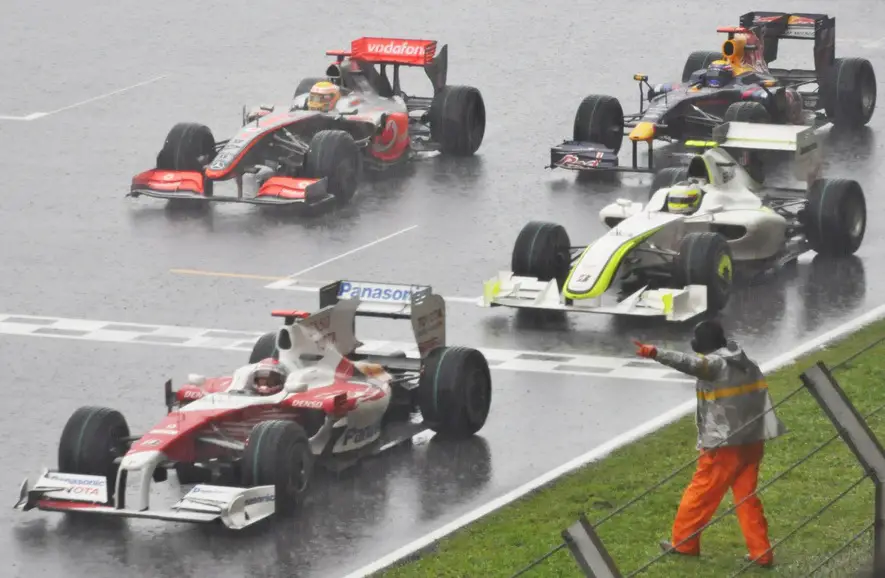
2009 Malaysia Grand Prix
The 2009 Malaysia Grand Prix was red-flagged after 31 laps due to torrential rain. The conditions did not improve and the Grand Prix was not restarted. As the race did not reach 75% of its scheduled distance, this is the most recent time that half points have been awarded in Formula 1.
2012 Hungarian Grand Prix
The 2012 Hungaroring race ran to 69 laps instead of 70 due to an incident on the first formation lap. Michael Schumacher pulled into the wrong grid slot (19th instead of 17th) resulting in a second formation lap being run. In the confusion, Schumacher turned his car off and had to be wheeled into the pit lane. The additional formation lap meant that the race distance was shortened to 69 laps.
2012 Singapore Grand Prix
For the first time in four years, the two hour time limit was reached at the 2012 Singapore Grand Prix. Sebastian Vettel won having completed 59 of the expected 61 laps.
2014 Australian Grand Prix
At the very first race of the hybrid era, both Marussia cars stalled on the grid. That caused there to be an extra formation lap, and the race distance was shortened from 58 laps to 57.
2014 Chinese Grand Prix
The 2014 Chinese Grand Prix ran to the scheduled 56 laps, but the chequered flag was erroneously shown one lap early. That meant that the race result was taken from the order at the end of Lap 54.
2014 Singapore Grand Prix
Seven laps of the 2014 Singapore Grand Prix were spent behind the Safety Car, meaning that the race reached the two hour time limit. Instead of 61 laps, the race ended after 60 tours of the circuit.
2014 Japanese Grand Prix
Following Jules Bianchi’s ultimately fatal accident, the 2014 Japanese Grand Prix came to an early end. Though 46 of the scheduled 53 laps were complete, the classified result was taken after 44 laps. This was the first time that a Grand Prix was red-flagged twice. It had already been stopped once due to weather conditions on the second lap.
2015 Hungarian Grand Prix
Felipe Massa lined up in the wrong grid slot at the end of the formation lap, and another formation lap was carried out. Massa was handed a five-second penalty as a result, and the race distance was cut down by a lap.
2015 Belgian Grand Prix
A loss of power for Nico Hulkenberg at the end of the formation lap meant that the original start was aborted and another formation lap commenced. As a result, the race distance was shortened from 44 laps to 43 laps.
2016 Australian Grand Prix
At the end of the formation lap, an electrical issue prevented Red Bull’s Daniil Kvyat from reaching the grid. The drivers started another formation lap and the race distance was shortened from 58 to 57 laps.
2017 Australian Grand Prix
As the cars lined up on the Albert Park grid, the start was aborted for a second year in succession. The drivers set off on another formation lap and the race distance was shortened by a lap.
2017 Russian Grand Prix
The first race start was aborted due to Fernando Alonso’s McLaren grinding to a halt at the pit entry. Another formation lap took place and the race distance was shortened by one lap.
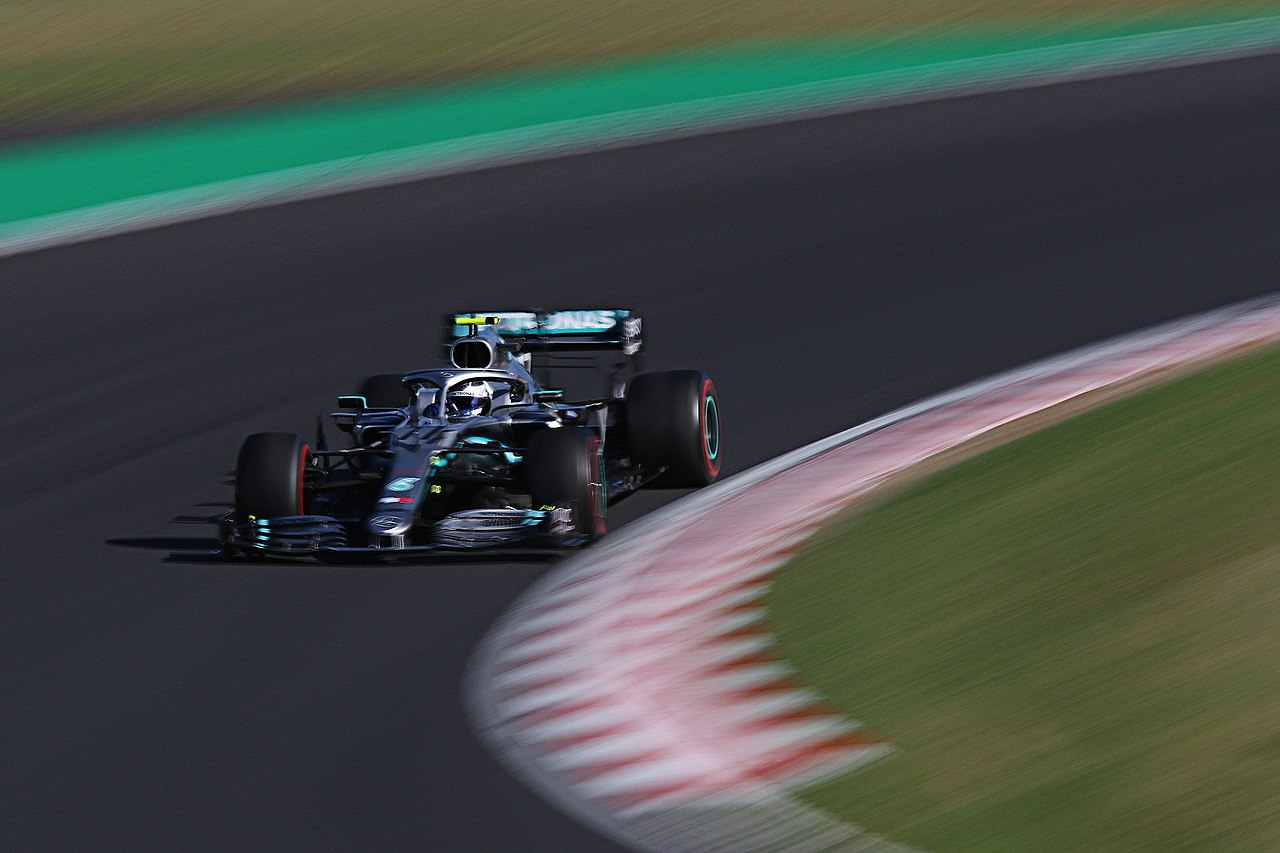
2017 British Grand Prix
A hydraulic failure for Jolyon Palmer on the formation lap of his final home Grand Prix appearance meant that another formation lap took place and the race distance was shortened by one lap.
2017 Singapore Grand Prix
Three Safety Car periods and wet conditions meant that the Singapore Grand Prix failed to reach full distance for a third time. The race was scheduled to last for 61 laps, but the two hour time limit was reached and the race was ended after 58 laps.
2018 Canadian Grand Prix
At a race where model Winnie Harlow was the waver of the chequered flag, a miscommunication between local officials led to the flag being shown one lap early. As a result, the final two laps of the race were voided. The race result was taken after 68 laps instead of the scheduled 70.
2019 German Grand Prix
Track conditions at the start of the race were considered unsuitable for a standing start, so the grid followed the Safety Car around for three laps. After those laps, conditions were deemed safe for a standing start. The cars then lined up on the grid to start a 64 lap race – down three laps from the scheduled 67.
2019 Japanese Grand Prix
The chequered flag lighting panels were incorrectly shown to race leader Valtteri Bottas one lap early, meaning that the result was taken from the end of Lap 52 and the 53rd lap was null and void.
2021 Bahrain Grand Prix
Sergio Perez’s Red Bull came to a stop on the Formation Lap, necessitating another tour of the lap before the standing start. The race distance was reduced from 57 to 56 laps as a result. Perez was able to get his Red Bull going again and started the race from the pit lane.
2021 Belgian Grand Prix
Wet weather meant that the 2021 Belgian Grand Prix was a complete washout, with only a handful of laps completed behind the Safety Car. In the end, the official classification made Max Verstappen the winner after a single lap of “racing”. The race broke the record to become the shortest ever F1 event.
2022 Monaco Grand Prix
Rain saw the start of the 2022 Monaco Grand Prix delayed. The race eventually started behind the Safety Car, bringing the race distance down by a single lap to 77. A later red flag period following a crash for Mick Schumacher meant that the race ran to a time limit. 64 laps of the originally scheduled 78 laps were completed.
2022 Singapore Grand Prix
Due to thunderstorms and heavy rain, the start of the Singapore Grand Prix was delayed by over an hour. The damp conditions and multiple Safety Car outings meant that the race ran to time instead of number of laps. 59 of the scheduled 61 laps were completed.
2022 Japanese Grand Prix
The 2022 Japanese Grand Prix started in wet conditions. A crash for Carlos Sainz brought out the Safety Car on Lap 1 and the red flag was shown as conditions deteriorated. Almost two hours later, racing resumed with just over 45 minutes remaining on the clock. The race ultimately ran to only 28 of the scheduled 53 laps.
2023 Italian Grand Prix
For the first time since 1978, a race at Monza failed to reach its full distance. The 2023 Italian Grand Prix featured no fewer than three formation laps – the first time this had occurred since the 2003 Austrian Grand Prix. Yuki Tsunoda stopped on track towards the end of the first formation lap, leading to the drivers completing another preparation lap.
Tsunoda’s car had still not been cleared by the end of the second lap, leading to the start being aborted. Team members returned to the grid and the race finally got underway 23 minutes after it was supposed to. The addition of two extra formation laps saw the race distance shortened from 53 laps to 51.
2024 Sao Paulo Grand Prix
Due to wet weather conditions, qualifying and the Grand Prix were held on the same day at Interlagos in 2024. The conditions proved more difficult for some than others, with Lance Stroll crashing out then getting stuck in the gravel on the formation lap. That led to an aborted start procedure, which brought the race distance down to 70 laps.
As the ‘aborted start’ sign was shown, Lando Norris – and the other drivers behind him – erroneously started another lap to the grid, before the start was aborted once more due to the large gaps between drivers who had set off on the formation lap and those who had stayed on the grid.
After a short delay, there was another official formation lap, after which the race finally begun. The race distance was shortened by another lap, to 69 laps, as a result. Norris was fined for the start procedure infringement.
2025 AUSTRALIAN Grand Prix
The season-opening race of the 2025 season was held in damp conditions and debutant Isack Hadjar fell victim to the rain on the formation lap, spinning out and hitting the wall. His race over, the start was aborted as his car was cleared away. It led to another formation lap being added and the race distance being shortened from the scheduled 58 laps to 57.
Header image: Takayuki Suzuki, Flickr / CC BY-SA 2.0
This article was originally published in August 2020 and has since been updated.


Pingback: F1 Track Stats: Albert Park - Lights Out ●●●●●
Pingback: F1 Track Stats: Monaco Grand Prix - Lights Out ●●●●●
Pingback: F1 Track Stats: Hungarian Grand Prix - Lights Out ●●●●●